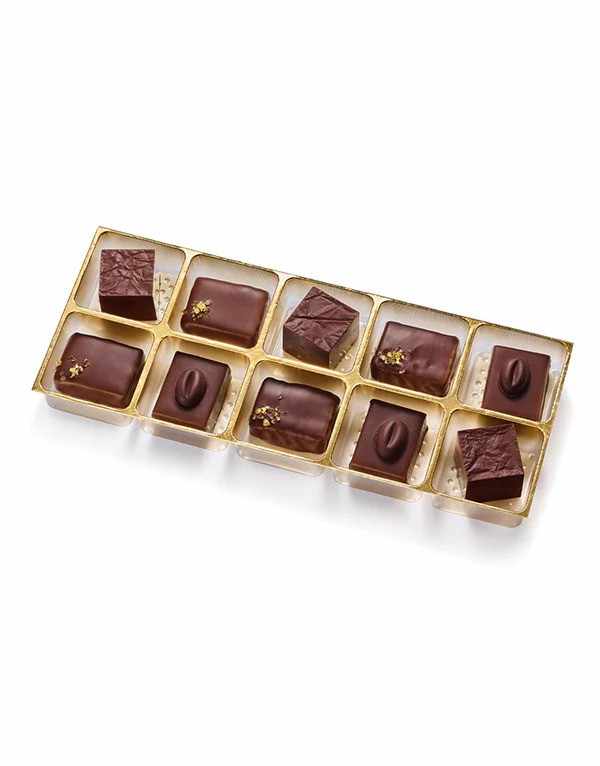
The Science Behind Dark Chocolate
Dark chocolate stands apart from its milk and white chocolate counterparts due to its higher cocoa content and minimal added sugar. Typically containing anywhere from 50% to 90% cocoa solids, dark chocolate delivers a more intense, complex flavor experience that appeals to sophisticated palates. The absence or minimal presence of milk solids allows the natural characteristics of cocoa beans to shine through, revealing subtle flavor notes that vary based on origin, processing methods, and cocoa bean variety.
The production of quality dark chocolate begins with careful bean selection. Cocoa beans from different regions produce distinct flavor profiles, Venezuelan beans might offer fruity notes, while African varieties tend toward earthier tones. After fermentation and roasting, these beans are ground into cocoa mass, which is then combined with cocoa butter and sugar in precise ratios. The percentage listed on dark chocolate packaging indicates the total cocoa content, including both cocoa solids and cocoa butter.
Health Benefits That Set Dark Chocolate Apart
Research has consistently highlighted dark chocolate's potential health benefits, primarily due to its high concentration of flavonoids, plant compounds with antioxidant properties. These antioxidants help combat oxidative stress in the body, potentially reducing inflammation and supporting cardiovascular health. Studies suggest that moderate consumption of dark chocolate may contribute to improved blood flow, lower blood pressure, and enhanced cognitive function.
The key to reaping these benefits lies in choosing high-quality dark chocolate with minimal processing and avoiding varieties loaded with excessive sugar or artificial additives. Dark chocolate with 70% or higher cocoa content typically offers the best balance of health benefits and palatability. Additionally, dark chocolate contains minerals including iron, magnesium, and zinc, as well as fiber, making it a more nutritionally dense choice compared to lighter chocolate varieties.
Flavor Complexity and Tasting Notes
One of dark chocolate's most appealing aspects is its flavor complexity. Unlike milk chocolate, which tends toward uniform sweetness, dark chocolate offers a spectrum of taste experiences. Professional chocolate tasters identify flavor notes ranging from fruity (berries, citrus) to nutty (almond, hazelnut) to spicy (cinnamon, pepper) to earthy (tobacco, leather). These flavors develop from the terroir of cocoa beans, fermentation techniques, and roasting profiles employed by chocolate makers.
When tasting dark chocolate, experts recommend allowing a piece to melt slowly on the tongue rather than chewing immediately. This method allows flavors to develop progressively, revealing the chocolate's full complexity. The initial taste, middle notes, and finish can all differ significantly, creating a complete sensory journey from a single piece.
Selecting Quality Dark Chocolate
Several indicators help identify quality dark chocolate. First, examine the ingredient list; it should be short, typically listing cocoa mass, cocoa butter, and sugar as primary ingredients. Avoid chocolates with vegetable oils replacing cocoa butter, as this significantly impacts flavor and texture. Second, assess the appearance, quality dark chocolate should have a glossy, uniform surface without white streaking (called bloom), which indicates temperature fluctuations during storage.
The snap test provides another quality indicator. When broken, good dark chocolate should produce a clean, sharp snap rather than bending or crumbling. This snap indicates proper tempering, a process that aligns cocoa butter crystals for optimal texture and stability. Finally, consider the aroma, quality dark chocolate releases complex, pleasant cocoa aromas rather than overly sweet or chemical scents.
Storage and Enjoyment
Proper storage maintains dark chocolate's quality and flavor. Store chocolate in a cool, dry environment between 16-18°C, away from direct sunlight and strong odors. Dark chocolate's lower moisture content compared to milk chocolate gives it a longer shelf life, often remaining fresh for several months when properly stored. For optimal flavor experience, allow chocolate to come to room temperature before consuming, as this allows the full spectrum of flavors to emerge and the texture to achieve its ideal state.
Write a comment ...